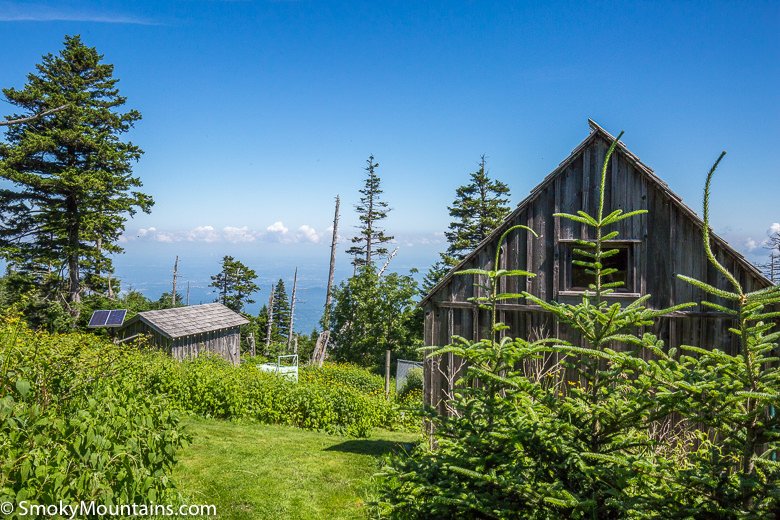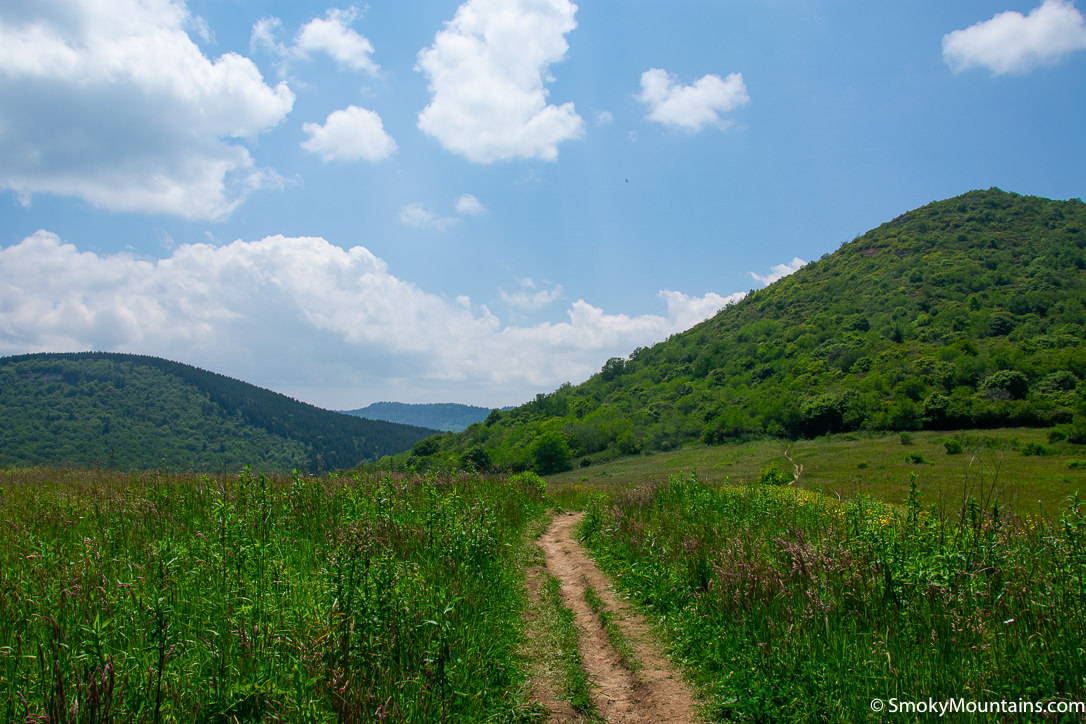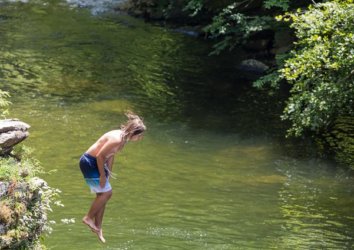Looking for a hike with waterfalls, Smoky Mountain scenery, and… llamas? If so, the Trillium Gap Trail in the Great Smoky Mountains National Park checks all the boxes. Though they’re not native to the Smokies, llamas feel right at home in the mountains. And as it turns out, these shaggy-haired creatures can pack just as much gear as they do attitude (if you’ve ever spent time looking into a llama’s eyes, you won’t question the attitude component). Llamas can pack up to 30% of their own body weight. They are native to the mountains of South America, so they’re deft on their feet and well-suited to navigate the uneven, rocky terrain. And they make the trip weekly, carrying food and gear and accompanying a smattering of hikers on the way up and down from the Leconte Lodge each week.
What’s the LeConte Lodge?
The LeConte Lodge’s history actually predates that of the Great Smoky Mountains National Park. It was built in 1925 by a gentleman named Paul Adams, an ardent admirer of the Smoky Mountains and an early conservationist in the area. He and a group of friends who loved the Smokies spent weeks on the mountain building the lodge for the Great Smoky Mountains Conservation Association. At that point, it was a getaway to make it possible for avid hikers to experience the beauty of the Smoky Mountains in a new way. And it has continued that tradition for almost 100 years.
The LeConte Lodge offers cabins and rooms for single guests to large groups, and they serve hot dinners and breakfasts to overnight visitors. They also have a gift shop at the summit and offer snack grab-bags for day hikers. Thinking about booking an overnight stay? Plan well in advance. They fill up quickly, and the wait list is very long. If you do manage to snag a cabin, you’ll be in for an incredible experience.
Why Llamas?
There are many trails leading up to the Leconte Lodge: five of them, to be exact. But none of them are accessible by vehicle. In short, to reach the Leconte Lodge, you’ll be spending several miles on your feet. You’ll ascend several thousand feet to reach the peak at 6,594 feet above sea level. And depending on the trail you take, you’ll be doing some water crossings, a bit of rock scrambling, and many miles of hiking on some fairly technical trails that can be a challenge even for experienced hikers. Some of those trails are easier/less steep and require less rock scrambling than others, but all of them take some stamina to accomplish.
As old-school as it seems, the supplies going in and out of Leconte Lodge–from bedding to victuals–all have to make the same trek you do. And since 1986, llamas have been a vital part of that supply chain.
Llamas have been used as pack animals for hundreds of years–mostly in their native habitat in South America. They’re excellent pack animals: strong, cooperative, and agile. The unique hairstyles, personality, and fuzz are just an added bonus to an already-loaded powerhouse. The llamas that trek up and down the Trillium Gap Trail are exceedingly well cared for, enjoying alfalfa cube fuel before their hauls and stopping for a long, restorative break, water, and snack at the summit before heading back down the mountain.
When Can You See Llamas on the Trillium Gap Trail?
Llamas typically carry supplies up and back on the Trillium Gap Trail on Mondays, Wednesdays, and Fridays, usually starting around 7 a.m. It typically takes the llamas (and their handler) about four hours to traverse the 6.7 miles up to the summit. If you’re on the trail on those mornings, your chances of encountering them along the way are very good–it’s hard to pass a pack of gear-carrying llamas on a narrow trail without taking note. You might not want to make the full loop unless you have plans to stay at the LeConte Lodge, simply because it’s such a long trail. For experienced hikers, it’s a doable day hike, but for many others, it’s a grueling experience resulting in a post-sunset return.
Shorter, but no less impressive, trails to the summit of Mount LeConte include the 11-mile Alum Cave Trail, the 8-mile Boulevard Trail, or the ever-popular 13.8-mile Rainbow Falls Trail. You’ll also find a slew of other, much shorter, day hikes in the area; hiking in the Smokies never gets old. And although you might not see llamas on some of those shorter day hikes, you’re sure to make some incredible memories.




